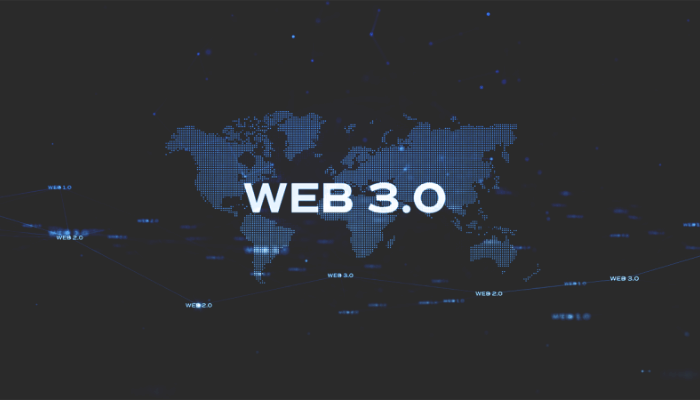https://nasacademy.com/blog/article/test

Ever seen one of your favorite content creators get locked out of their own social media account? Many will never regain access and are forced to start building their social presence all over again. It’s any creators worst nightmare – but it’s just one of the risks of doing business in Web 2.0 applications. But the next phase of the internet, Web 3.0, is disrupting older technologies through developments like blockchain.

With Web 3, content creators will control their data and digital footprints through interconnected, decentralized data. In simple terms, this means Web 3 will virtually eliminate many of the platform-dependency issues that creators face today.
This article explains the key differences between Web 2 vs Web 3, how cryptocurrency ties into this next wave of the internet, and what this means for content creators.
Very simply, it’s the next iteration of the internet. Web 3.0 has developed as the natural evolution from older generations, Web 1.0 and Web 2.0, as more cutting-edge technology like Artificial Intelligence start to dominate the digital world.
To understand this evolution, and its effects on the creator economy, let’s rewind and start back at Web 1.0.
Web 1.0 was the read-only, Static Web of 1991-2004, where most internet users were consumers. They couldn’t engage with or create content. What you saw (limited and with no interaction) was what you got.
Web 1.0 had no algorithm to tailor user-generated content, so your access to relevant information was also very minimal. You couldn’t create pages, engage with articles, monitor statistics, or even profit from ads.
Some improvements like Javascript and Flash happened over time, but essentially Web 1.0 was just one significant Wikipedia page linked together for information consumption.
Web 2.0, the “Social Web,” moved the internet from static pages (designed for passive consumption of information) to more interactive experiences. Advancements in technologies like HTML5 and CSS3 paved the way for startups to develop social networks and other interactive web platforms like Airbnb, YouTube, Facebook, and Instagram.

User-generated content flourished as platforms and applications owned by a handful of powerful corporations collected, distributed, and shared data. These centralized companies started selling their collected data to advertisers as users viewed more information. The internet now tailored Web pages to who was viewing them, and this is how Web 2.0 became the age of targeted advertising.
In 2007 the first iPhone launched, expanding the usage and user base of the Web through mobile internet access. From web browsers to mobile applications, this always-connected state created a massive surge in information that the Web had never experienced before.
Before 2004, the Web was primarily dark and anonymous. The platforms that have came from Web 2.0 have encouraged and rewarded behavior that humanizes the Web. Engagement and content creation was crucial to the success of social network sites.
The apps collected data to better tailor the users content, to keep them on their websites longer. This created a cycle of information collection as users scrolled Instagram, watched YouTube, and performed Google searches.
The Cloud also introduced mass-production personal computer hardware. This new management technology allowed companies to stop buying and maintaining expensive infrastructure upfront or renting storage. With vast data centers worldwide, millions of entrepreneurs benefited from these low-cost resources that scaled as their businesses grew.
In Web 3.0, there will be a shift from users to owners. It’s the latest evolution of the internet that refers to a decentralized online ecosystem.
Through technologies such as DeFi and Blockchain, digital records of transactions and data are available across a peer-to-peer network. It operates without the need for a centralized or third-party authority, which is what enables the existence of cryptocurrencies.
So, Blockchain plays a critical role in the next phase of the internet, and it defies traditional data storage and management approaches – which provides a unique solution to transactions without intermediaries.
The creator economy is still predominantly a centralized, digital ecosystem. Although (almost) anyone can make an account and post on social media, users give up some of their control because of the networks’ rules.
Although platforms such as TikTok and Instagram are working to create creator-friendly systems that allow partnerships between users and platforms, the concern remains that social media powerhouses are still positioning themselves to receive a percentage of the creator’s revenues.
Consistent content uploads has already proven crucial for success within the creator economy – with infinite amount of content stored in the social channels of Web 2.0.
The most significant developments to this industry will be where content lives and who has the ultimate authority to form, distribute, and monetize as Web 3.0 continues to take shape and disrupt norms.
Web 3.0 is a significant step toward open, trustless, and permissionless networks that will give much more power to Web users.

Open in that a centralized gatekeeper will not own the platforms and apps created on Web3. Instead, users will acquire ownership stakes by contributing to the development and maintenance of the services. In web 3.0, there will be no censorship of social networks like Facebook or Twitter.
Networks will be trustless in the sense that users will be able to interact publicly and privately in full world view. It will be within all users control to distribute their content and trade their products and services globally without a trusted third party. Trustlessness will maximize creator earnings as the profits of content creators will not be transferred through a middleman.
Web 3.0 will have permissionless networks, where users and creators can engage without authorization from a controlling body. Permissionless networks will prevent platforms from having the power to destroy the businesses running on them. Content creators will never again have to worry about social channels deactivating their accounts.
Experts predict that in Web 3.0, DAOs, a DAO, Decentralized Autonomous Organization, will be running every business.
A DAO is an organization represented by rules encoded as a transparent computer program controlled by the organization members rather than one controlling authority. The result will be no centralized corporate powerhouses, CEOs, or central governments to impress within a business. Without managers and with a company’s rules embedded in code, those with the most tokens will vote on how the company changes.
In the next decade, you might find users buying Amazon gift cards using Metamask and paying with Ethereum! It’ll likely be a series of ideas like this that grow together until the legislature disassembles centralized companies like Amazon, Facebook, and Google and decentralized unregulated DAOs grow to replace them.
Web 3.0 will provide a more personalized and customized browsing experience with a more intelligent and human-like search assistant. The decentralized benefits will help establish a more equitable web and empower content creators to control their own companies and content. It is intended that Web 3.0 will interface with systems, people, and home gadgets automatically.
As a result, both humans and computers will be involved in the content creation and decision-making processes. This will enable the intelligent design and distribution of highly personalized content directly to each internet user.
For the first time ever, top experts have come together with Nas Academy to form a web3 learning community – and you’re invited!
Whether you’re launching an NFT project, investing in Bitcoin or NFTs, or are curious about how web3 works, you’ll discover that “community” is the foundation of the web3 space. And now, you can join a vibrant and supportive community full of web3 enthusiasts like yourself.
This community offers a safe space to network, learn, and collaborate with some of the most innovative thinkers around the world. On top of that, we’ve pooled all our resources to give you access to thousands of dollars worth of Nas Academy resources (including our best-rated classes) all under 1 subscription.
By subscribing to the Nas Academy Web3 Community, you’ll also be invited to join exclusive events and workshops with the world’s leading experts – an opportunity that you won’t easily find anywhere else. So, if you’re looking to learn more and discuss web3 with others who share your interests, subscribe today and join the movement that’s changing the Internet.
By Team Nas Academy
By Admin Nas Academy